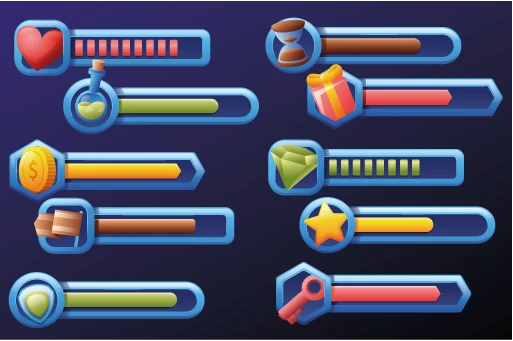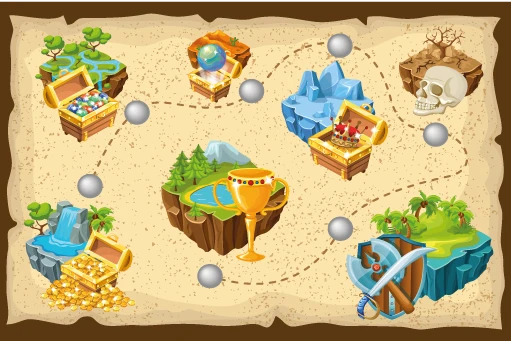How the Misinterpretation of Gamification has Led to Widespread Poor-Quality Instructional Design
This is the first in a series of two articles about gamification in instructional design. Gamification of learning should be about the application of pedagogical approaches used in games. Utilizing the mechanisms and techniques developers use to teach players how to play. The methods applied to learning about the skills and abilities you have in the game.
There seems to have been a disconnect within some parts of the learning design community. A simplified approach to gamification has been adopted by some. The approach focuses on adding gaming components to learning materials. Often implemented to try to improve motivation in an otherwise dull training program. Instead of addressing the root cause, bells and whistles have added on to dazzle the learner.
A big problem with this approach is often it does not consider the implications for the learner. This approach uses the name of a justified and researched field and manipulates it. Most people have heard of gamification, but few seem to have a good understanding of what it is all about.
In this article, I explore seven gaming components recommended for gamifying learning materials. Sound effects; Timers; Progress bars; Maps; Avatars; Point-scoring; and Simulators. In each case, I highlight how it is recommended to be used. I then look at the potential implications of using that recommended practice. Finally, I consider if there is a suitable application for that type of component.
Sound effects
The idea is to give an instant cue to the user if they are right or wrong. It claims to provide audio stimulation.
If you’re learning new skills for work, you don’t get instant feedback sounds if you do the right or wrong thing. The consequences may not be known for a considerable time later. While it may seem like a nice idea, it is creating a dependency that will not help the learner in the long-term.
Sounds may be useful if they mimic a real-life setting. Maybe a machine response sound, or background noise that replicates a work environment.
Timers

The idea of forcing a user to select a series of answers or to complete a task in a set time.
At an early stage in a learning process, this is more likely to result in failure than in enhancing success. Repeated failure on the same thing is likely to cause motivational issues. It is also irrelevant to a real-life situation unless there is a real need for speed. The stress of putting a user under time pressure is counter-productive in most cases. Allowing people space to think through a question is better than forcing them to act quickly.
Again, the benefit of a timer is when there is a need for precision under pressure. When a split second really will make the difference between life and death. Few real-life situations are going to need that level of precision. There are also more effective ways to help with drill repetition than relying on a timer. Even when precision under time pressure is a thing, it is not advisable to introduce the timer too soon. It’s important that the learner can gain a basic understanding of the skill. Once that has been achieved you can begin to slowly apply increased pressure over time.
Progress bars

The aim is to help the user understand where they are in their journey through the event and course.
Chances are if your activity requires a progress tracker, then it’s probably too long. If you want to give the user a sign of how far through a process, they are then clear about it. This is question 4 of 5. A simple 4/5 will do the same thing. Adding a graphic can often overcomplicate a user interface.
If a progress bar gives useful feedback to the user about their ongoing performance, then it may work. Again, a realistic setting in a workplace is always preferable. Few workplace systems have progress bars. If you’re creating training for one that does not, then keep it to the early stages of training. Again, a feedback system can become a crutch, if it doesn’t match a real-life situation.
Maps

An in-world map to guide learners through your course.
Most courses are often linear, so a linear map depicted in a fantasy-style game map is only a distraction. It’s not going to add great substance to your learners’ lives. Even in a situation where there are many routes through a large course a map may not be the best solution.
Now if you were to consider the map as a workplace tool. In a game, a map serves as a workplace tool, it tells us where to go, and it may show us where to find something. So, if we substitute that with a job aid or series of aids, then we’re in the realm of something useful. As with a zoomed-in map, we may only need to give a zoomed-in section of a job aid. This simulates a real-life work environment, we can call on job aids when we need them. Encouraging learners to be familiar with these tools and how to use them can only be beneficial in the long run.
Avatars

An avatar is a graphical or animated representation of the learner.
Where do we begin? It seems innocent enough. Giving the learner agency and seeing themselves in the learning material. Accept to do that effectively, you’d need to give them complete agency to design what they look like. Allow them to express their identity. Identity is an extremely personal thing. Applying avatars in this way you run the risk of alienating the user. Asking them to see themselves as represented by your choice of what they should look like.
Avatars can be useful as non-player characters. They can give embodiment to the characters that are working within your scenario. You should be mindful to avoid stereotypes or any form. You will also want to consider how to balance gender and race so that it is a realistic representation.
Point-Scoring

It is argued that this is a great motivator. Users will work hard to score and collect points. What this doesn’t say is that it can also be a great demotivator.
Point scoring will likely detract from the real skill or knowledge. A user is more likely to remember a high score but less likely to recall what got them to that high score. This means you run the risk of reinforcing misconceptions. Not everyone is motivated towards full marks or a high score. Most people have a happy medium they will settle for. This leads to incorrect answers being “ok,” when we need to address those with feedback.
At the end of the day, point scoring is likely a distraction. A better approach is to offer Feedback. Effective, meaningful, and prompt feedback is far more useful to the learner. It might not be as fun as beating your colleague, but it is more likely to bring about improvement.
Simulations

Immersing the learner into the learning experience.
Ok, there is nothing wrong with this. If you have the budget, then it’s an amazing way for users to learn. The only warning is about keeping it real. A passenger plane simulation is not going to help a tube train driver learn to do their job better. So, if the environment does not offer a realistic work setting there may be a disconnect there too.
Simulators are also great fail-safe environments where users can test out different approaches. Try something new, the simulator gives realistic feedback, and then you can try again.
Not all budgets will stretch to a full-blown simulator. You might find that the skills you’re training don’t need the graphical interface. It might be possible to create a sandpit within a software system to allow simulations to take place. You may find that a written branching scenario may be enough.
There is a real risk that as technologies develop and enhance, we feel a need to adopt them. The reality should always be ensuring that it adds value to the learning experience. That the setting is representative of where the skill will be used. Finally, the learners can easily engage with the simulated environment.
As you can see, in most cases the recommendations made are not without their problems. Using gaming components is not going to greatly improve the learner experience. It may create more problems than the un-gamified solution. The potential to un-motivate learners is real and shouldn’t underestimated.
My conclusions on simulators also applied to the gamification of learning events.
The gamified learning event must:
- Offer a realistic context and setting. One that is as close as possible to the real-life situation where the skill or knowledge is to be used. Anything other than that will make it harder to bridge the gap from activity to application.
- Have learning as the single focus. The addition of other components must not get in the way of the learning. The content and learning material are meant to be the key components. If anything gets in the way of that, then it is an over-design problem and should be removed. If there is ambiguity, then testing should clarify that.
- Easy and accessible access to use. The usability of the learning event shouldn’t be affected by gamification components. Particularly mindful of not creating unnecessary hurdles to access.
If any gamifying component hinders any of these three aspects, then it shouldn’t be used.
In the next article on gamification, I will explore the origins of the concept. I will look in more detail at some of the key mechanisms and techniques used.
Interested in how I can help you create engaging, meaningful learning materials? Interested in applying gamification principles to support better learning? Then Let’s connect and begin a dialogue on how I can help you.